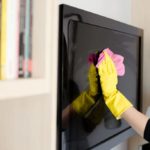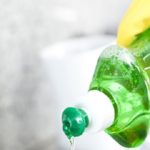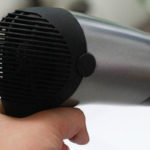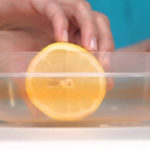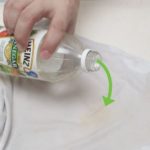Over time, minerals like calcium and magnesium as well as dirt can accumulate on the faucet, causing not only stubborn stains and hard water spots on the faucet head but also slowing down the water flow. Therefore, cleaning the dirt on the faucet is very important.
How to remove dirt on the faucet
Below are some simple and effective ways to remove dirt on the faucet, using common household ingredients.
Use baking soda
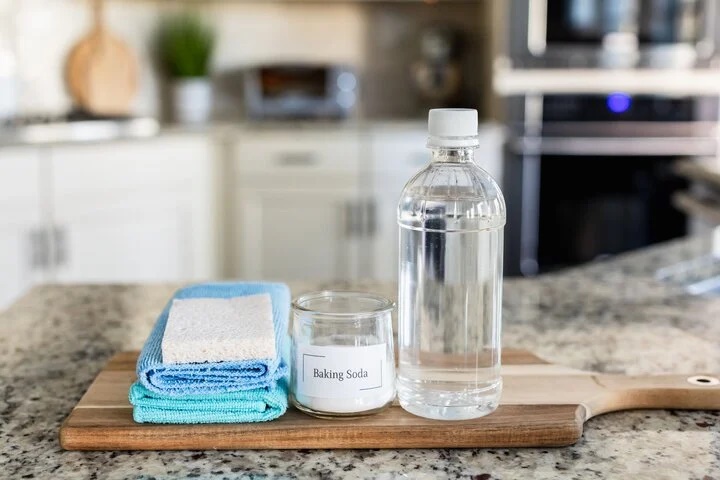
Baking soda helps remove dirt on the faucet that is both safe and effective. (Photo: Better Homes)
Baking soda can be used to remove calcium deposits on stainless steel devices, faucets, which are both safe, cheap, and highly effective. You just need to prepare some baking soda, a sponge, gloves, cloth, and a small bowl of water. The steps are as follows:
– Dissolve baking soda with clean water.
– Use a clean cloth to soak the mixture, squeeze gently and then wipe evenly on the dirty faucet, then soak with baking soda solution and wrap around the faucet, for 1 hour.
– Use a sponge to scrub the dirty faucet head and then use clean water to spray evenly to wash away the dirt.
Use toothpaste
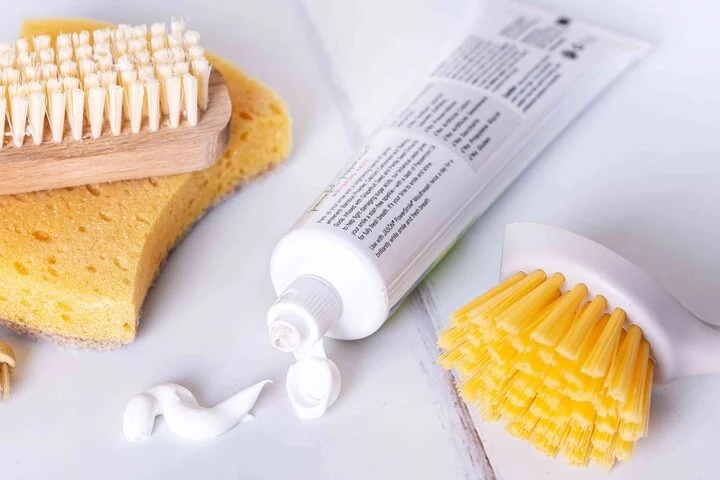
Toothpaste helps remove mineral deposits on the faucet. (Photo: The Spruce)
This is a simple way to remove dirt on the faucet that people often use. You just need to prepare toothpaste, a soft brush, a sponge, clean water, and gloves for protection. The steps are as follows:
– Identify areas with calcium deposits on the faucet and moisten with clean water.
– Apply toothpaste evenly to the areas with dirt, leave for 10 – 15 minutes.
– Use a soft brush to gently scrub the dirty faucet, do not use hard brushes to avoid scratching the enamel layer, causing aesthetic damage.
– In areas with thick deposits, use a sponge to scrub, both cleaning the dirt and not damaging the outside enamel layer.
– Use clean water to spray on the scrubbing area to wash away the dirt, restore the shiny appearance of the tools.
Remove dirt on the faucet with vinegar or lemon
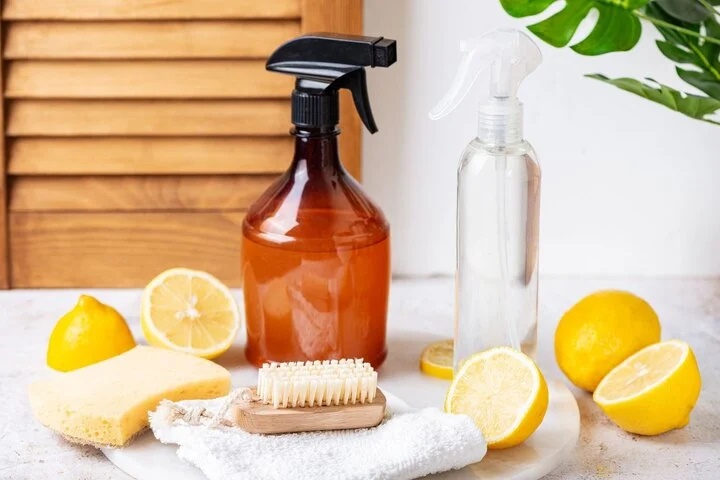
Using white vinegar or lemon is also a very effective way to remove calcium deposits on the faucet, and it is quick. (Photo: The Spruce)
You need to prepare some white vinegar or lemon. If using white vinegar, you pour vinegar into a pot and heat it up. Use a sponge soaked in heated vinegar and scrub it on the dirty faucet until it breaks, then use clean water to rinse off.
If using lemon, you just need to cut the lemon in half and scrub it directly on the device that needs to be cleaned. Depending on the level of dirt adhesion, you can increase the intensity of scrubbing and use more lemon. You scrub until you see the dirt running out and then use clean water to rinse again.
Use specialized cleaning solution
In addition to natural materials, you can use specialized cleaning solutions to remove calcium deposits on the faucet. The market currently sells many different types of cleaning solutions. They all have chemical components to quickly remove dirt and restore the original shine of the device.
The steps are very simple, just pour this specialized product directly onto the surface of the device and gently wipe it to finish.
According to VTC news

























